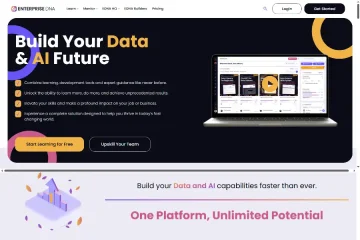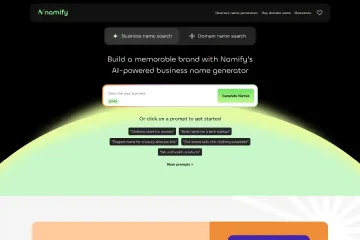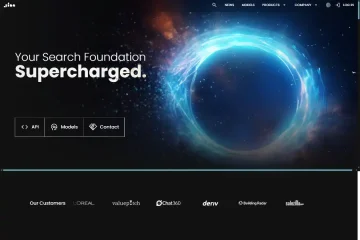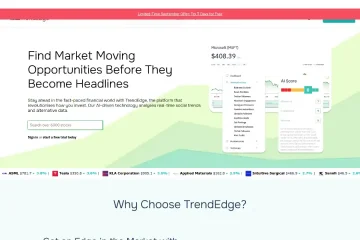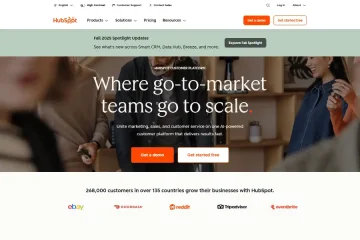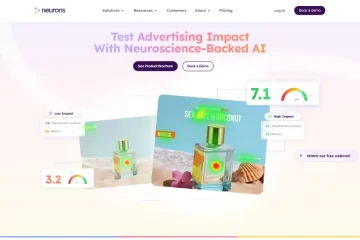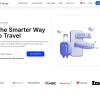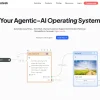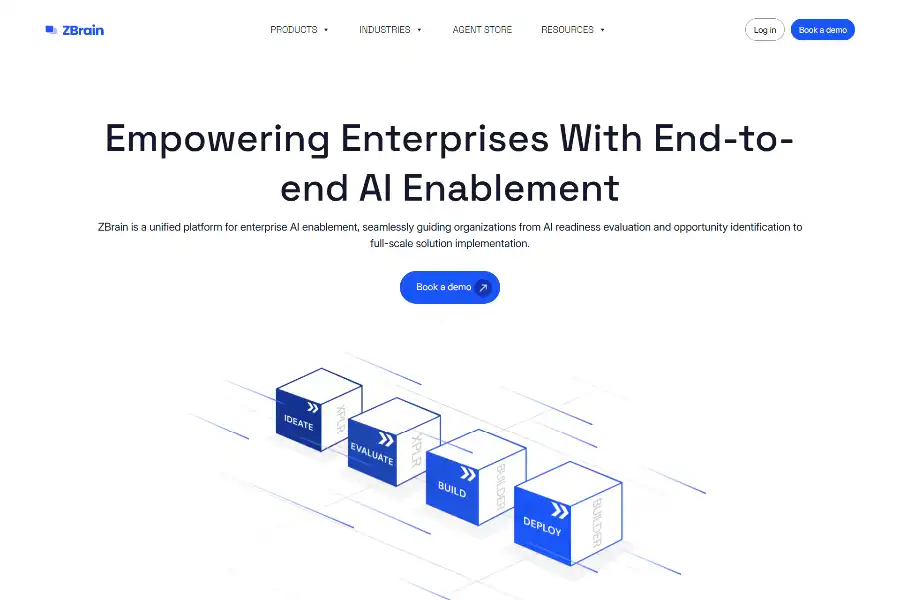
ZBrain: Deep-Dive Analysis of an End-to-End Enterprise AI Enablement Platform
Introduction
In the race to become AI-native, most large organizations stall somewhere between ambition and execution. Gartner reports that 85 % of AI projects never reach production because enterprises cannot bridge the gap between proof-of-concept and scalable, secure deployment. ZBrain, developed by LeewayHertz Technologies, is positioned to close this gap. Marketed as a “unified platform for enterprise AI enablement,” ZBrain bundles an AI-readiness assessment framework (XPLR) with a generative-AI orchestration engine (Builder) and a library of verticalized AI agents. This article dissects ZBrain’s technical architecture, functional modules, real-world deployments, competitive advantages, pricing model, and strategic roadmap—equipping technology leaders with the insights required to decide whether ZBrain should anchor their next wave of digital transformation.
Technical Architecture and Core Principles
AI Readiness Layer: ZBrain XPLR
ZBrain XPLR is not a static questionnaire; it is a data-driven framework that ingests structured metadata from enterprise systems—ERP, CRM, HRIS, ticketing, data lakes—and applies unsupervised clustering to surface processes with high automation potential. A rules engine cross-references these clusters against 35+ industry KPIs (e.g., order-to-cash cycle time, support ticket backlog) to quantify ROI and risk. The output is a heat-map dashboard that ranks opportunities by impact versus complexity, feeding directly into the implementation backlog managed inside Builder.
Generative-AI Orchestration: ZBrain Builder
Builder is the heart of the platform. Technically it is a low-code orchestration layer that sits on top of open-source large language models (LLMs) such as Llama-3, Mistral, and Falcon. Builder adds four proprietary components:
- Data Mesh Fabric: A streaming ETL layer that normalizes data from 250+ pre-built connectors (Snowflake, Salesforce, Workday, SAP, ServiceNow, SharePoint, S3, REST/GraphQL endpoints) and vectorizes documents for retrieval-augmented generation (RAG).
- Prompt Orchestrator: A governance engine that injects dynamic system prompts, enforces PII redaction, and controls token budgets across models.
- Agent Runtime: A Kubernetes-native micro-service that spins up containerized agents with CPU/GPU autoscaling, allowing sub-second cold-start latency.
- Compliance Shield: A fine-grained policy engine that maps every prompt/response pair to GDPR/CCPA lineage tags, with built-in audit trails.
Deployment Topologies
ZBrain supports three deployment modes:
- SaaS multi-tenant on AWS us-east-1 & eu-central-1, SOC 2 Type II certified.
- Single-tenant SaaS within customer’s own cloud account (BYOC) on AWS, Azure, or GCP.
- Air-gapped on-premises via OpenShift or VMware Tanzu for regulated industries.
Functional Features in Depth
AI Agents Catalog
ZBrain ships with 40+ pre-configured agents grouped by department:
- Finance: Variance Analyst agent pulls trial balance from Oracle EBS, runs Python-based Monte Carlo simulations, and emails CFOs annotated P&L bridges.
- Sales: Lead Prioritizer agent enriches CRM records with Clearbit and Bombora intent data, scores leads via XGBoost, and schedules follow-ups in Outreach.
- Marketing: Segment-of-One agent generates 1:1 email variants using dynamic brand tone derived from historical campaign performance.
- Customer Support: Tier-1 agent resolves 38 % of tickets autonomously by searching Confluence and past Jira issues, escalating to humans with context summaries.
- HR: Talent Sourcer agent scrapes LinkedIn, GitHub, and StackOverflow, matches against job descriptions, and initiates personalized drip sequences.
- IT Operations: Code Reviewer agent scans pull requests for OWASP vulnerabilities and suggests remedial snippets in the IDE.
- Legal & Compliance: Contract Analyzer agent extracts clauses, flags deviations from playbooks, and drafts redlines using retrieval from clause libraries.
- Procurement: Supplier Risk agent monitors Dun & Bradstreet scores, sanctions lists, and ESG ratings, issuing early-warning alerts.
- Billing: Invoice Reconciler agent matches PO, receipt, and invoice data, auto-corrects pricing mismatches, and triggers ERP journal entries.
Security & Privacy Controls
ZBrain encrypts data in transit (TLS 1.3) and at rest (AES-256). Customer-managed keys via AWS KMS or Azure Key Vault are supported. All prompts and responses are stored for 90 days in an append-only, immutable log; customers can shorten or extend retention via policy.
Market Applications and Case Studies
Healthcare: Reducing Claims Denials
A 3,000-bed U.S. health system deployed the Billing Reconciler agent across Epic and Cerner instances. Within three months, denial rates dropped from 14 % to 7 %, translating to an annual revenue uplift of USD 11.4 million. The project paid back license fees within 72 days.
Manufacturing: Supplier Risk Monitoring
A Fortune 500 industrial conglomerate feeds 18,000 suppliers into the Supplier Risk agent. Real-time sanctions screening avoided a USD 2.1 million fine when a tier-2 chip vendor appeared on the OFAC list. Procurement cycle time also fell by 22 % due to faster onboarding checks.
Financial Services: Regulatory Reporting
A European bank used the Contract Analyzer to review 1.2 million legacy derivatives contracts ahead of EMIR refit deadlines. Man-month effort was reduced from 240 to 11, saving EUR 1.8 million in external legal fees.
Pricing and Commercial Model
ZBrain pricing is modular:
- Assessment (XPLR): One-time fee starting at USD 25,000 for up to 10 business units and 100 data sources.
- Builder Platform: Tiered subscription based on the number of active agents and tokens consumed: USD 2,500/month for 5 agents/1 M tokens, scaling to USD 25,000/month for unlimited agents and dedicated GPU clusters.
- Professional Services: Optional implementation packages range from USD 50,000 to USD 500,000 depending on data complexity and integration scope.
Volume discounts and multi-year contracts reduce list price by up to 30 %. A free 14-day sandbox with sample connectors is available on request.
User Feedback and Community Sentiment
On G2, ZBrain holds a 4.7/5 rating across 63 reviews (as of July 2025). Users praise the “no-code flow builder” and “out-of-the-box ERP connectors,” while criticisms focus on “sparse documentation for custom Python nodes.” On Reddit’s r/enterpriseAI, early adopters highlight the ease of switching between open-source models, but warn that “token costs can spike if prompt guardrails are not tight.” LeewayHertz runs a private Slack community of 1,100+ architects; weekly office hours with product engineers have a 92 % satisfaction score.
Competitive Landscape
ZBrain competes directly with Microsoft Copilot Studio, Amazon Bedrock Agents, and emerging players like Moveworks and Glean. Key differentiators include:
- Vertical Depth: Pre-trained agents tuned to industry KPIs rather than generic chatbots.
- Deployment Flexibility: Full on-prem option absent from most hyperscaler stacks.
- Integrated Readiness: XPLR assessment is bundled, whereas competitors sell discovery services separately.
However, ZBrain lags in ecosystem breadth—Microsoft’s ecosystem offers thousands of Power Automate connectors compared to ZBrain’s 250.
Future Roadmap and Strategic Outlook
LeewayHertz’s public roadmap (shared at SaaStr 2025) includes:
- Q4 2025: Launch of ZBrain Marketplace allowing third-party agents with revenue-share model.
- Q1 2026: Native support for multimodal agents combining text, image, and voice inputs, leveraging GPT-4o-style vision transformers.
- Q2 2026: Edge inference nodes for factory-floor deployments with NVIDIA Jetson boards, reducing latency to <50 ms.
- Q3 2026: Industry-specific compliance packs (HIPAA, FedRAMP High, PCI-DSS) delivered as policy-as-code templates.
Analysts at Forrester predict that if ZBrain delivers on roadmap commitments, its addressable market could expand from USD 180 million (2025) to USD 1.2 billion by 2028, driven by demand for sovereign AI in regulated sectors.
Conclusion
ZBrain stands out as a pragmatic, end-to-end solution for enterprises that have outgrown pilot projects and need a governed path to scaled AI. Its combination of readiness diagnostics, low-code orchestration, and departmental agents addresses the full lifecycle—an approach few vendors rival. While documentation depth and ecosystem breadth remain areas for improvement, the platform’s early traction in healthcare, manufacturing, and financial services demonstrates tangible ROI. For organizations seeking to accelerate digital transformation without surrendering data sovereignty, ZBrain merits serious consideration as the backbone of their enterprise AI stack.

